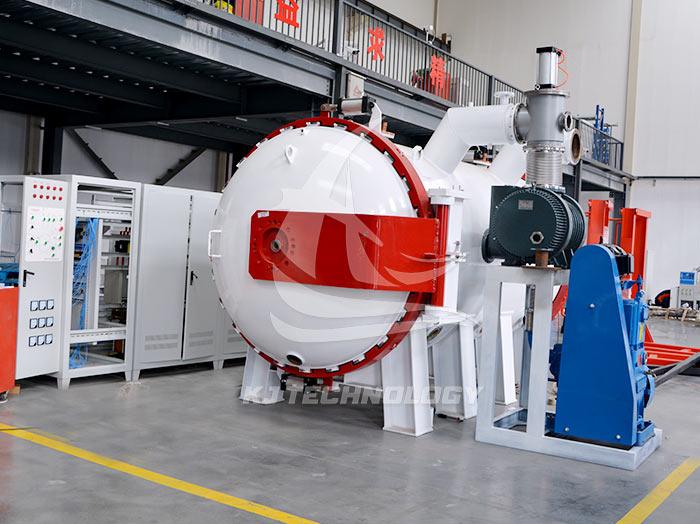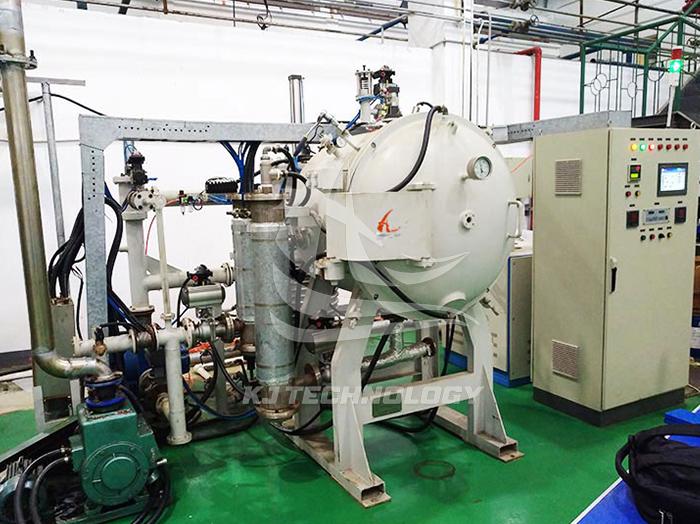What gases can be passed through a small vacuum furnace for experiments?
 10-21-2025 Author: KJ technology
10-21-2025 Author: KJ technology
The gases that can be introduced into a small vacuum furnace for experiments mainly include inert gases (such as nitrogen and argon), active gases (such as hydrogen), mixed gases, and specific process gases. The specific selection needs to be determined according to the experimental materials and process requirements. The following is a detailed explanation:
1. Inert gas
Nitrogen (N ₂)
Function: Used to create anaerobic or low oxygen environments, prevent metal oxidation, and avoid organic combustion.
Application: Heat treatment of oxygen sensitive materials (such as metal alloys), oxide protection, and other processes.
Advantages: Low cost, easy to obtain, suitable for most experiments that require oxygen isolation.
Argon gas (Ar)
Function: Similar to nitrogen, but with stronger chemical inertness and greater stability at high temperatures.
Application: High temperature heat treatment (such as metal sintering), preventing metal oxidation or organic matter combustion.
Advantage: Suitable for experiments with extremely strict requirements for oxygen content (such as titanium alloy treatment).
2. Active gas
Hydrogen (H ₂)
Function: Sintering in a reducing atmosphere, reducing metal oxides to metals or reducing surface oxidation of metals.
Application: Annealing, removal of oxide film, reduction treatment of specific materials.
Attention: Explosion proof devices should be equipped, and the exhaust gas should be treated by catalytic combustion or alkaline absorption.
Oxygen (O ₂)
Function: To provide an oxidizing environment in specific material processing (such as oxidation sintering).
Application: Processes that require oxidation reactions (such as ceramic oxidation, metal surface oxidation).
Restrictions: Flow must be strictly controlled to avoid excessive oxidation.
3. Mixed gas
Nitrogen+hydrogen mixture
Function: Regulate oxygen content to achieve a balance between reduction and protection.
Application: Processes that require controlling the degree of oxidation (such as carburizing treatment of some metals).
Ammonia gas (NH3)
Function: Provide nitrogen source for nitriding treatment.
Application: Metal surface hardening, improving wear resistance.
Attention: It is necessary to operate in a fume hood and wear a gas mask.
hydrocarbon
Function: As a carbon source, it is used for surface carburizing and hardening.
Application: Improve the surface hardness of metals (such as gears and shaft parts).
4. Specific process gases
Partial pressure process gas
Function: Fill a small amount of gas at a pressure close to vacuum (0.01 Torr to 10 Torr) to control the reaction.
Application: Removing oxides (such as hydrogen), surface carburizing (such as acetylene), limiting element volatilization (such as Cr).
Advantages: Precise control of reaction conditions, suitable for complex geometric parts.
Convective heating gas
Function: Fill inert gas to atmospheric pressure or higher, and evenly heat it through an internal convection fan.
Application: Uniform heating of complex components such as deep holes and sharp corners.
Advantages: Improve temperature uniformity and shorten process time.








